- Home
- F. Scott Fitzgerald
The Fantasy and Mystery Stories of F Scott Fitzgerald Page 2
The Fantasy and Mystery Stories of F Scott Fitzgerald Read online
Page 2
When the story was accepted for publication by the prestigious Saturday Evening Post and published on 29 May 1920, the public, too, shared the author’s pleasure – as James E. Miller has commented in F. Scott Fitzgerald: His Art and His Technique (1965):
‘The Offshore Pirate’ could be used to document the fact that Fitzgerald was investing his characters with a glamour which they did not deserve. But the secret of the popular success of his stories is that they served as escape for all the bored five-and-ten-cent store clerks who dreamed of being glamorous Fitzgerald flappers, lavishly courted by disguised millionaire philosophers.
(The story was also reprinted in England in the fashionable Sovereign Magazine of February 1922 – from where it has been extracted for this book – and proved equally popular with readers on this side of the Atlantic.)
There are a number of other interesting points about ‘The Offshore Pirate’. Initially, Scott had intended to call the story ‘The Proud Piracy’ and had planned an ending in which the kidnapping which occurs is revealed to have all taken place in Ardita’s dream. Wisely, he resisted the temptation to weaken the story with this device. Fitzgerald also did not initially let on that there was a real-life original of his heroine.
She was a girl from St Paul named Ardita Ford who was clearly delighted when this secret emerged. The revelation was made in 1921, just before the story was brought to the screen as a silent movie by MGM directed by Dallas M. Fitzgerald (no relation) starring Viola Dana and Jack Mulhall. Seizing on this, Ardita arranged for a celebrity theatre party to be held in St Paul after the first night’s screening, ‘So that everyone can see what I am like in the movies!’
‘The Offshore Pirate’ was also optioned for a musical comedy, and though never produced on the stage, a number of the tunes and lyrics were actually written in 1930 and when played for Fitzgerald impressed him. Four years later, the Hollywood film maker Carl Laemmle also approached Scott with the idea of a ‘talkie’ version of the story, but this never materialized.
By the time Scott decided to write another tale of fantasy, he and Zelda had moved to New York and he had completed the first draft on his new novel, The Beautiful and the Damned. This change of pace from the demands of the novel was called ‘His Russet Witch’ and he forwarded the manuscript to his agent, Harold Ober, in October 1920, enthusing in an accompanying letter, ‘I think it is the best thing I ever wrote.’
Later, when the euphoria of the moment had died down, Scott took another cooler look at what was undeniably an accomplished short story and revised his judgement.
‘It was a natural reaction to revel in a story wherein none of the characters need be taken seriously’, he said. ‘I’m afraid that I was somewhat carried away by the feeling that there was no ordered scheme to which I must conform.’
‘His Russet Witch’ has been aptly described by Robert Sklar as ‘more surreal than real’ in the manner in which it recounts the experiences of a bookstore clerk named Merlin Grainger who for forty years continually encounters a mysterious beauty named Caroline who represents for him ‘my romantic yearning for a beautiful and perverse woman’. But, as the reader will discover, Merlin’s magical fantasy is to be cruelly crushed in the dramatic finale.
The story was published in one of New York’s stylish new monthly periodicals, The Metropolitan Magazine, in February 1921. And such was the magazine’s enthusiasm for Scott’s stories that they signed an immediate contract via Harold Ober for six more. ‘His Russet Witch’ was also optioned to MGM – as was his next fantasy tale, ‘The Curious Case of Benjamin Button’ – but sadly neither followed ‘The Offshore Pirate’ on to the screen.
‘The Curious Case of Benjamin Button’ appeared in the spring of 1922, after the Fitzgeralds had taken their first trip to Europe, then moved back to St Paul, and celebrated the arrival of their daughter, Scottie. In the publisher’s announcement for the short story it was also noted that the author had just released his second novel, The Beautiful and the Damned, to widespread critical acclaim.
Paul Rosenfeld is just one of several admirers of ‘The Curious Case of Benjamin Button’. With this story, he has written, ‘a very genuine gift of fantasy arrives in Fitzgerald’s work.’ The tale was inspired by its author’s admiration for a group of fanciful stories by Mark Twain (another mainstream American literary figure who also wrote supernatural tales) and concerns a man who is born old and grows younger the longer he lives.
In a letter to Ober from his home on Goodrich Avenue in St Paul in December 1921, Scott explained that the idea had occurred to him some while before, but on the spur of the moment he had suddenly decided to take two days off to finish it. The recent arrival of Scottie in October may well have been the catalyst, but the story certainly lives up to Fitzgerald’s estimate: ‘It is a weird thing and I suppose the Metropolitan would be most likely to take it.’
In fact, the story was rejected by the magazine in the new year – an accompanying letter explaining that although six of the Metropolitan’s editors had liked it, ‘our readers, however, would be offended.’ Collier’s Magazine, to whom Ober then submitted it, obviously felt their readers were less susceptible to offence by Fitzgerald’s fantasy, and published it in their issue of 27 May 1922.
Scott and Zelda Fitzgerald were by this time acknowledged celebrities in St Paul, and their regular parties, especially those which mirrored Scott’s love of the fantastic, were legendary. On Friday 13 January 1922, for example, they organized a ‘Bad Luck Ball’ at the University Club in a room hung with black crêpe. During the evening, copies of a newspaper written by Scott, The St Paul Dirge – Mortuary Edition were distributed to the revellers. One front-page story was headlined ‘FRIGHTFUL ORGY AT UNIVERSITY CLUB’, while another report stated, ‘Business Better, Says Bootlegger.’
But such extravagances, plus the heavy drinking which both Scott and Zelda were now indulging in, were severely taxing their finances. Both were clearly bored with local life and hankered after New York. In fact, Scott had already begun to borrow money from his agent against future royalties from his books and payments for his short stories. As a writer it could be said that he was now coming into his maturity – but the tell-tale signs of the problems both financial and health-wise which lay ahead were also already becoming evident.
A month after Collier’s publication of the Benjamin Button story, Smart Set magazine prominently featured ‘The Diamond as Big as The Ritz’, and Fitzgerald’s mark on fantasy could be said to be assured. For the next two years, though, he turned his back on the genre, and although he continued to write short stories, he also tried his hand at writing a play, The Vegetable (which failed in November 1923) and attempted to write himself out of debt with a string of fashionable if unsatisfying non-fiction articles for magazines such as Vanity Fair and Ladies Home Journal which bore such self-explanatory titles as ‘Imagination and a Few Mothers’ and ‘The Most Disgraceful Thing I Ever Did’.
It was in the spring of 1924 that the Fitzgeralds’ restless spirits drove them to cross the Atlantic and begin a period of wandering about Europe. Two fantasies date from this period, ‘Rags Martin-Jones and the Pr–nce of W–les’ and ‘The Adjuster’. Though both were written speedily to help Scott cope with his mounting debts, they have special qualities which even their author’s anxiety and drinking could not dampen.
‘Rags Martin-Jones and the Pr–nce of W–les’ features John M. Chestnut, a rich, handsome playboy who controls a mysterious network of power and uses it to fulfil the extravagant wishes of his bored girlfriend. It has been described by John A. Higgins in F. Scott Fitzgerald: A Study of The Stories (1971) as ‘perhaps an unconscious parody of The Great Gatsby’ – an interesting observation, indeed, for it was written in 1924 shortly before Scott began to work solely on Gatsby. True or not, the story’s mixture of an exotic night club, an elevator boy posing as the Prince of Wales travelling incognito, and John Chestnut’s curious murder accusation against himself, keeps the whole plot engr
ossing to the very end. The story appeared in Britain in Woman’s Pictorial of 18 October 1924 where Fitzgerald was described as ‘one of the foremost and cleverest of modern writers.’
‘The Adjuster’ is a rather more sinister tale about the machinations of a mysterious psychiatrist named Doctor Moon. Arthur Mizener believes this to be one of Fitzgerald’s most successful fantasies – listing it with ‘The Diamond as Big as The Ritz’ and ‘A Short Trip Home’ – and makes a special point about the symbolism and allegory of the tale. Robert Sklar believes it to be especially significant, ‘because it marks Fitzgerald’s first explicit exorcising of his flapper creation, the beautiful, young, wilful girl … Luella Hemple’s selfishness has caused her husband’s breakdown and her child’s death.’ Still other experts have seen in it the signs of the marital troubles that were already besetting the Fitzgeralds themselves.
Scott admitted to his agent that the tale ‘may seem too gloomy’ to be easily placed, but believed it was ‘a peach of a story’. His apprehensions were not entirely misplaced, either, for the tale did not find a publisher until September 1925 when it finally appeared in Red Book Magazine.
Two events were to highlight Scott Fitzgerald’s three-year sojourn in Europe – in 1925 he wrote The Great Gatsby, and not long afterwards he became friendly with another famous expatriate American author, Ernest Hemingway, in Paris. In between the rounds of high living and all-night parties, he also began work on a new novel with murder as its central theme.
Scott’s basic plot concerned a young man of evil temperament whose father is serving a long prison sentence for a crime of violence, and is himself driven to commit the same act against his unscrupulous and domineering mother while the pair are on vacation in France. It seems probable that a series of events connected with some of Scott’s friends had inspired the proposed book, for in a letter to his publishers in New York while working on the manuscript, Fitzgerald commented:
Contemporaries of mine had begun to disappear into the dark maw of violence. A classmate killed his wife and himself on Long Island, another tumbled ‘accidentally’ from a skyscraper in Philadelphia, another purposefully from a skyscraper in New York. One was killed in a speak-easy in Chicago; another was beaten to death in a speak-easy in New York and crawled home to the Princeton Club to die; still another had his skull crushed by a maniac’s axe in an insane asylum where he was confined.
Despite such ‘inspiration’, Fitzgerald worked disjointedly on the idea for almost four years, somehow never getting near completion. His problems with the idea were indicated by its changing title from, initially, The World’s Fair, then to Our Type and, lastly, The Boy Who Killed His Mother. Whether the distractions of the life style he and Zelda were living, or a simple failure to make the plot work, ultimately caused him to discard what would have been his only mystery novel, we shall now never know.
But all was not quite lost, for Scott managed to pour some of the atmosphere of repressed violence and passion that he had planned for the novel into a short story of crime, ‘The Dance’, which he wrote in the spring of 1926. Set in a small Southern town and narrated by a young New York girl who is sensitive to the ‘secret shapes of things’ that exist just below the apparently sedate life of the community, the story has a mounting tension that makes it comparable with the best examples to be found in the detective story genre.
Fitzgerald, though, was sceptical of the merits of ‘The Dance’, and even after Harold Ober had briskly sold it to Red Book Magazine (where it was published in June 1926) and it had provided him with some much needed cash, he still wanted to tinker with it and even asked if the title could be changed to ‘In a Little Town’. However, Ellery Queen, the doyen of American crime writers and editor of his own magazine, considered it one of the best short stories Fitzgerald ever wrote, and it is from the pages of his famous Mystery Magazine where it was prominently featured in the issue of March 1953 that it has been reprinted for this volume. (In August 1940 the story was also sold for broadcasting on the Philip Morris Radio Show – but Scott was dead before the transmission took place.)
The Fitzgeralds’ financial plight was a major factor in bringing them back to America in December 1926, where Scott decided to concentrate his energies on the swift returns to be had from writing short stories as well as accepting the blandishments being made to him to move to Hollywood – as a number of his contemporaries had done – to write film scripts.
Not long after his return to his native land he published the appropriately titled ‘A Short Trip Home’, which again broke new ground in being his first fully fledged ghost-story. In it he again employs some of the supernatural mood he had used in This Side of Paradise, but he is now a much more skilful practitioner at this notoriously difficult kind of story to carry off – a verdict that the Saturday Evening Post also reached when accepting the story for its Christmas issue of 17 December 1927.
‘Frankly, we did not find it easy to reach our decision with reference to “A Short Trip Home”’, an editor of the magazine wrote. ‘Ghosts are rather difficult to handle in the Post, but the story is so well done that we have not been able to resist it.’
Malcolm Crowley was among those readers also unable to resist the story, seeing it as being ‘curiously Japanese in spirit’. He later wrote, ‘There are many Japanese legends of re-embodied spirits who try to seduce the living and carry them off to a shadow world. In this case, however, the ghost has a social meaning. The living-dead man in high button shoes represents the lower order of humanity that offers a mysterious threat to the standards and the daughters of the rich people whose mansions rise above them on the hill.’
In my own opinion, the confrontation of the living and the dead on the railroad train in ‘A Short Trip Home’ is as chilling an episode as any to be found in the works of such masters of the ghost story as Charles Dickens and M.R. James.
The next story in this book, ‘Outside the Cabinet-maker’s’ was also published at Christmas in 1928 in The Century magazine. It, too, harks back to childhood and the tales of fairies and ogres that so delighted Fitzgerald – and which he, in turn, related to his daughter.
Scott thought this little fantasy would be ideal for Woman’s Home Companion, but though one editor on the magazine reported it to be ‘delightful’ it was none the less rejected, and it was not until several months later that it was bought by The Century for just $150. Though, yet again, it was a story the dispirited author held in low regard, it has since delighted every reader fortunate enough to come across a copy, as it has only been reprinted once.
The final decade of Scott Fitzgerald’s life – the thirties – has, of course, been exhaustively documented: his wife Zelda’s breakdown; his restless travelling both in America and abroad; the publication of Tender Is The Night in 1935; and his unhappy last years in Hollywood where he wrote scripts and worked on his novel, The Last Tycoon. Arthur Mizener has made an interesting comment that Fitzgerald was rather like his character Cecilia in that final book who ‘accepted Hollywood with the resignation of a ghost assigned to a haunted house.’
Yet, despite all his problems at this time, Fitzgerald also wrote several more excellent short stories, three of which evolved from his fascination with fantasy in different forms, and it is these tales which complete this book.
‘One Trip Abroad’ is one of the most intriguing ‘doppelganger’ stories I have ever read – and it is doubly fascinating because the two central characters, an American couple Nelson and Nicole Kelly, who visit Europe to find their vision of the good life and instead fall victim to moral and physical decay, are so clearly modelled on Scott and Zelda. The ending of this tale of supernaturalism in which a flash of lightning strikes and the couple realize just who the other mysterious man and woman they have repeatedly encountered during their travels really are, is brilliantly handled.
James Miller has pointed out that the story is a treatment in miniature of the major line of action in Tender Is The Night.
�
��“One Trip Abroad”,’ he writes, ‘presents the Dick Divers under the names of Nicole and Nelson Kelly … as year succeeds year on their trip and one sordid episode follows on the heels of another, the bloom fades and the atmosphere gradually shifts from the shabbily romantic to the sinister.’
Miller’s final sentence about the couple’s realization who the other elusive pair are I will not quote so as to avoid spoiling the reader’s enjoyment of this story, which was published by the Saturday Evening Post on 11 October 1930, and again had to wait until after Fitzgerald’s death for its true quality to be appreciated.
‘The Fiend’, the story of a brutal murderer which was published in Esquire magazine in January 1935 is an even more neglected tale. It is another example of Scott’s interest in crime, which he had continued to discuss in his non-fiction in essays like ‘Echoes of the Jazz Age’ (November 1931) and ‘My Lost City’ (July 1932).
In ‘Echoes’, for instance, he tells us that at the time of the Leopold-Loeb murder, Zelda was ‘arrested on the Queensborough Bridge on suspicion of being the “Bob-haired Bandit”’; while in ‘My Lost City’ he muses, ‘Sometimes I imagine myself reading, with curious interest, a Daily News of the issue of 1945: MAN OF FIFTY RUNS AMUCK IN NEW YORK – Fitzgerald Feathered Many Love Nests, Cutie Avers – Bumped Off By Outraged Gunman.’
The title of ‘The Fiend’ is suggestive of horror, and it is interesting to learn that while he was in Hollywood, Fitzgerald enjoyed going to watch some of the series of outstanding horror movies produced by Universal Pictures which began with the 1931 production of Frankenstein, starring Boris Karloff. Scott, in fact, mentioned the famous English actor in a letter to his daughter Scottie, which he wrote from Hollywood.

 This Side of Paradise
This Side of Paradise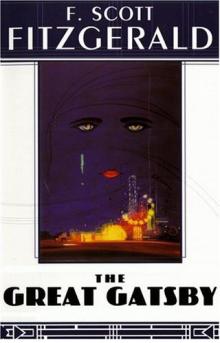 The Great Gatsby
The Great Gatsby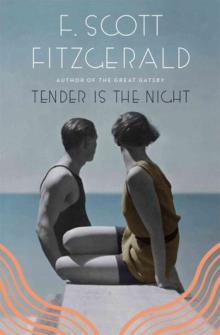 Tender Is the Night
Tender Is the Night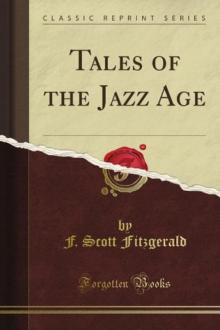 Tales of the Jazz Age (Classic Reprint)
Tales of the Jazz Age (Classic Reprint)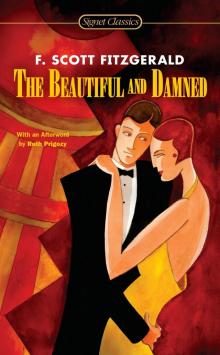 The Beautiful and Damned
The Beautiful and Damned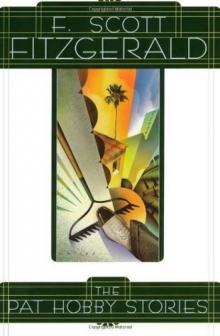 The Pat Hobby Stories
The Pat Hobby Stories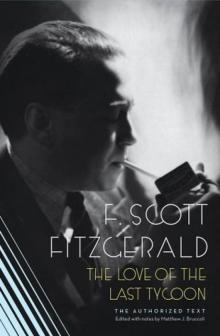 The Love of the Last Tycoon
The Love of the Last Tycoon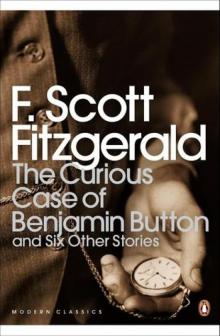 The Curious Case of Benjamin Button and Six Other Stories
The Curious Case of Benjamin Button and Six Other Stories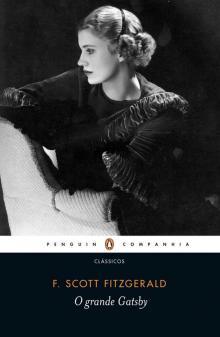 O Grande Gatsby (Penguin)
O Grande Gatsby (Penguin)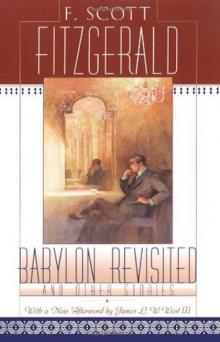 Babylon Revisited and Other Stories
Babylon Revisited and Other Stories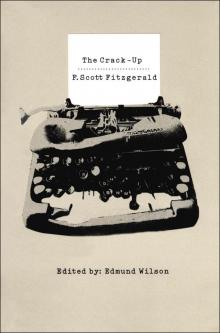 The Crack-Up
The Crack-Up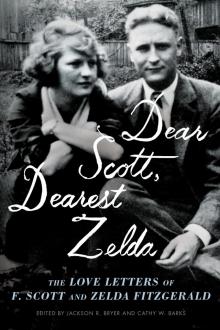 Dear Scott, Dearest Zelda
Dear Scott, Dearest Zelda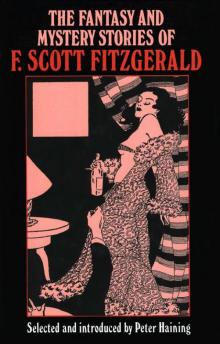 The Fantasy and Mystery Stories of F Scott Fitzgerald
The Fantasy and Mystery Stories of F Scott Fitzgerald Flappers and Philosophers
Flappers and Philosophers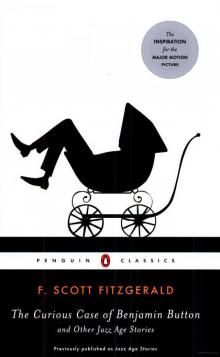 The Curious Case of Benjamin Button and Other Jazz Age Stories (Penguin Classics)
The Curious Case of Benjamin Button and Other Jazz Age Stories (Penguin Classics) I'd Die For You
I'd Die For You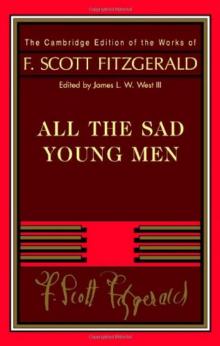 All the Sad Young Men
All the Sad Young Men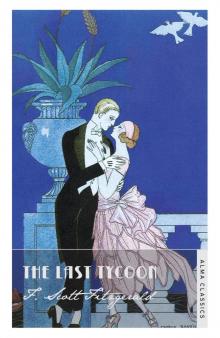 The Last Tycoon
The Last Tycoon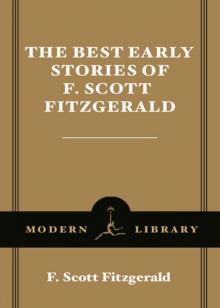 The Best Early Stories of F. Scott Fitzgerald
The Best Early Stories of F. Scott Fitzgerald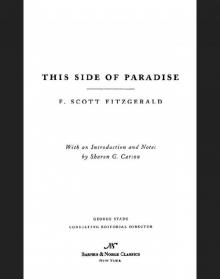 This Side of Paradise (Barnes & Noble Classics Series)
This Side of Paradise (Barnes & Noble Classics Series) A Life in Letters
A Life in Letters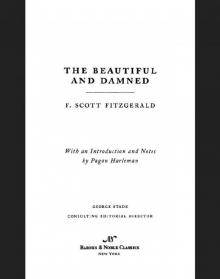 Beautiful and Damned (Barnes & Noble Classics Series)
Beautiful and Damned (Barnes & Noble Classics Series)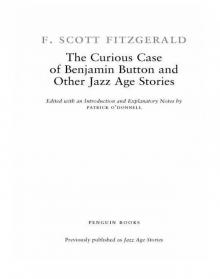 The Curious Case of Benjamin Button and Other Jazz Age Stories
The Curious Case of Benjamin Button and Other Jazz Age Stories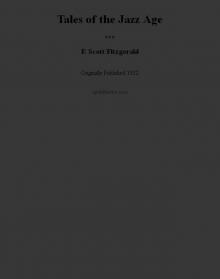 Tales of the Jazz Age
Tales of the Jazz Age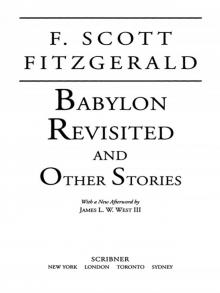 Babylon Revisited
Babylon Revisited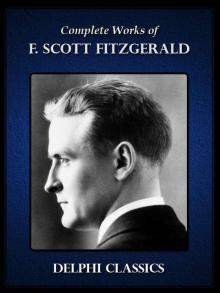 Complete Works of F. Scott Fitzgerald UK (Illustrated)
Complete Works of F. Scott Fitzgerald UK (Illustrated)